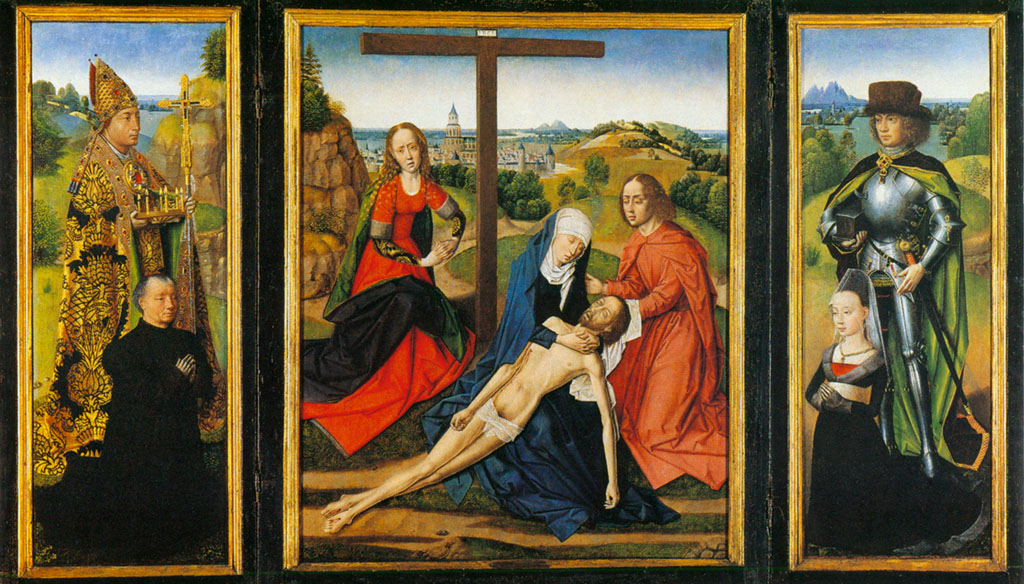
Master of the St. Lucy Legend.
Lamentation Triptych
with permission of
Museo Thyssen-Bornemisza, Madrid
The central panel is closely modeled after the Lamentation of Christ by Dieric Bouts, with the only main differences being the Eyckian influence of the city of Jerusalem and landscape, the angle of Christ’s left arm, and Mary Magdalene’s lack of headdress. The underdrawing of the St. Lucy Master’s work even shows that the headdress was originally part of his plans.
Each of the two side panels shows one of the donors, paired with the appropriate patron saint and praying towards the center as if to gaze upon the scene of Christ and the saints. St. Donatian carries a wheel with candles, an attribute that refers to the legend in which the pope threw a wheel into the Tiber, bringing the drowned archbishop Donatian back to life. He also holds a processional cross that symbolizes the relics of St. Donatian kept in Bruges. St. Adrian’s attributes are a Burgundian jewel and an anvil, which symbolizes the torture he experienced after converting to Christianity. St. Donatian and St. Adrian stand in front of their own landscapes, distinguishing their setting from the Jerusalem of Christ, the Virgin, Mary Magdalene, and St. John the Evangelist. These panels once included the coat of arms of each donor, either when they were first painted or in memory of the donors, but they were removed much later (c. 1960). On the exterior of these panels, two grisailles depict St. Peter and St. Barbara as statues with key and tower, respectively. While the Master may have had help in painting the central and inner side panels, he probably created the grisailles himself.
Select Bibliography:
Eisler, Colin. The Thyssen-Bornemisza Collection: Early Netherlandish Painting. London: Sotheby’s Publications, 1989. See in particular pp. 116-23.
Pita Andrade, José Manuel and Maria del Mar Borobia Guerrero. Old Masters: Thyssen-Bornemisza Museum. Madrid: Fundación Colección Thyssen-Bornemisza, 1992. See in particular pp. 128-29.
